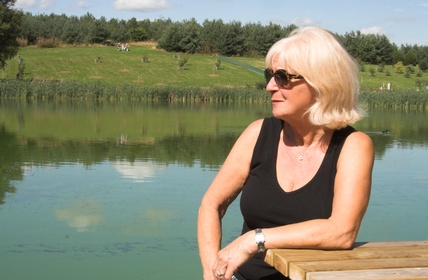Guest Post by Sarah Danielson
 Vitamin D is not one that most people are familiar with. It hasn’t enjoyed the popularity of C (which helps to bolster our immune system, amongst other things), the 11 vitamins in the B complex (covering a range of health benefits that includes improving your mode and aiding memory), or even A (good for your eyes). And yet, vitamin D plays an important role in keeping us healthy by helping to support the structure that supports our bodies: the skeleton.
Vitamin D is not one that most people are familiar with. It hasn’t enjoyed the popularity of C (which helps to bolster our immune system, amongst other things), the 11 vitamins in the B complex (covering a range of health benefits that includes improving your mode and aiding memory), or even A (good for your eyes). And yet, vitamin D plays an important role in keeping us healthy by helping to support the structure that supports our bodies: the skeleton.
I know what you’re thinking; calcium is the vitamin that does the most for our bones. And this is true. Calcium provides the building blocks for strong bones. But vitamin D is equally necessary as the bonding agent that allows our bones to absorb the calcium we ingest, and this is especially important to women.
For older women, osteoporosis is a serious concern.
According to the International Osteoporosis Foundation (IOF), nearly 75 million people in the U.S., Europe, and Japan suffer from osteoporosis. That accounts for 1 in 3 women over the age of 50 (and 1 in 5 men). And the condition is no walk in the park (literally). Every year, an estimated 9 million people experience bone fractures related to osteoporosis, the largest percentage of which are at the hip. But that’s not all; bones that are weak or brittle simply may not support your body, causing you pain and immobility. And after a certain age, it becomes more difficult to increase bone mass, but extremely easy to lose it.
In adolescence, your bones mainly use calcium to grow. But as you get older, they begin to undergo a process by which new bone mass is added (through calcium absorption) while older bone is broken down so that calcium can be reabsorbed into the body. This keeps blood calcium at the levels needed to support the proper function of the brain, heart, and other organs. But how does vitamin D fit in?
Without this essential vitamin to help calcium bond to your bones, in essence creating new bone tissue, much of the calcium you ingest will simply pass through your body, leaving your bones weak and depleted (and susceptible to breakage). This is especially prevalent in women because bone loss is linked to hormones. Since the level of estrogen drops significantly after menopause, older women are particularly prone to osteoporosis. However, vitamin D can help.
Your best source might surprise you, it’s the sun.
About 15 minutes per day spent in the sun can give your body all the vitamin D it needs to function properly. Of course, you may not be interested in UV exposure every day, in which case you can certainly take a supplement or turn to foods that are high in vitamin D, such as meats, fatty fish, eggs, mushrooms, and sometimes even milk (vitamin D enriched). Of course, you will also need to consume sources of calcium so that D can do its job.
You should consult with a doctor before you start any form of treatment. If bone loss is severe, you may need to take medication along with a diet regimen. Knowing what causes bone loss and working to prevent it from a young age is the best possible course of treatment. In that respect, vitamin D plays a vital role.
Sarah Danielson writes for Everyday Health where you can find answers to all of your health related questions including information on arthritis and how to treat it.







